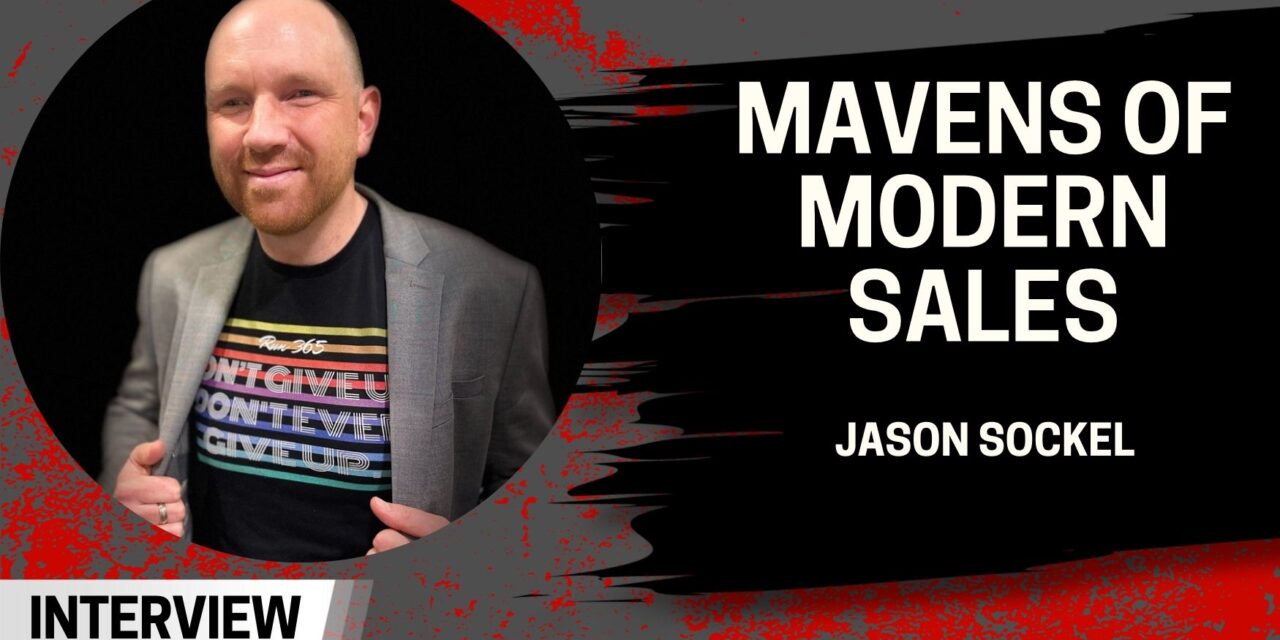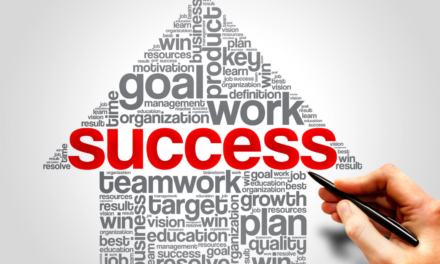
Mavens of Modern Sales – Jason Sockel

Welcome to Mavens of Modern Sales, where we take a deep dive with the sales leaders pulling sales teams in the 21st century to get their insights on leadership, strategy, industry trends, and more.
This week we talked to Jason Sockel, Chief Revenue Officer at LibraryPass.
You shared a great example of an AE staying top of mind even after a “no”—how do you encourage your teams to maintain this kind of persistence and value-driven follow-up without coming across as pushy? What advice would you give to sales professionals about the balance between respecting a prospect’s decision and continuing to build the relationship for future opportunities?
My teams understand that “no” is the second best outcome a sales professional can receive. If you’re working a qualified opportunity then you’ve done the research to know that, whether or not the prospect has realized it yet, your product is of value to them. Given that, offering to stay in touch post-no and providing resources to the prospect is a way to illustrate that you are a partner, not simply a software provider (as an example). Here’s the key: provide the resources without expectation, this isn’t a quid pro quo. Understand that this type of prospecting will yield what appears to be an “Inbound” lead in a few months. The prospect will eventually have a gap you have proven you can fill, and they’ll reach out. My team members invest significant time in these types of activities and in one case, resulted in our largest 2024 deal. NOTE: If you’ve not done the legwork to proactively determine your value to this prospect, you likely never had a qualified opportunity in the first place.
You mentioned that traditional methodologies like MEDDPICC may not align with today’s buying world—what alternative approaches or strategies do you recommend for breaking into Enterprise markets?
Since 2020, purchasing conditions have changed multiple times. The Economic Buyer is disappearing in lieu of buying committees; Decision Processes and Criteria are inconsistent, ebbing and flowing as priorities shift. Your champion’s influence is shrinking. More stakeholders get a vote and increasingly advocate for their own competing priorities. One CEO recently described it to me as a “Battle Royale.” Breaking into enterprise markets has evolved into a game of coalition creation and bridge building. Sales professionals need to be experts in: Right Personas, Right Message, Right Time. They must articulate value propositions across IC’s, middle/senior management and C-levels (Right Personas), in language that aligns with their respective key deliverables (Right Message). Your high influence champions are likely end users, your high authority catalysts understand how your product impacts the bottom line. Your leaders in the middle are the bridge that connects both sides, and keep you in the loop as priorities come into focus (Right Time). For example, if I’m selling a platform like Salesloft, I’m reaching out to successful AE’s, their VP’s and the CRO, and aligning resonant messaging to each. It takes heavy research and significant time, but to win enterprise deals consistently in this market, you need to become a bridge builder, and that’s not a slow process.
You stated that PLG is a myth. What are some common mistakes you’ve observed in companies trying to implement PLG, and how do you recommend addressing them?
Product Led Growth is appealing and promises low overhead and CAC, at least when looking at individual customers. You reduce headcount and let the product do all the work. After all, most of us have at one point upgraded from some free service to premium. The problem as I see it is that no product worth having will go without competitors, and competitors will leverage service to steal market share. As I mentioned above, customers derive more value from partnering with people, not just a platform. Consider this, Hubspot estimates that organizations are up to 12 times more likely to renew current customers than to acquire new ones. Gartner analysis shows that both customer success and account management are critical for improving customer retention. The sum of it all says relying strictly on PLG will result in low retention rates, loss of market share and a perpetual loop of paying to acquire new customers, which everyone knows is more expensive than renewing existing ones. Given that, I’d strongly recommend striking a balance between expensive, inflated sales orgs and exclusively relying on PLG. Growth doesn’t happen if you lose customers as quickly as you earn them. To sustain your business, you need both good people and good product.
With buyers harder to reach and many GTM teams focused on collecting rather than creating pipeline, what do you think is driving the decline in sales performance, and what are salespeople overlooking in today’s market?
I believe sales reps are being given outdated tools and coaching, bloated quotas and too little time to build their book through research. Activity metrics rule all, and it’s becoming toxic for culture and performance. Reps make more calls using parallel dialers to increase their odds, but there’s a lack of intention behind who is on the other line. They send more emails for the best chance that SOMEONE will respond, but the ICP work and data is incomplete or inaccurate. Buying processes are changing and buyers with a seat at the table make decisions in different ways (Millenials, Gen Z, etc.), but the sales game has largely been left unevolved. In a world where we’re all competing for attention, the simple idea of Right Persona, Right Message, Right Time is undervalued. Invest the time researching your persona, determine how and when you can best help, then craft a strong hypothesis based on what you learned. Share it with the right people, at the time when they’re focused on the priority you service and watch your meaningful conversations soar. These activities are controllable, but they require significant intentional effort, thought and support from leadership. When done right and consistently, this process resonates with your ICP, and THAT, is how you win their attention.
What advice would you give to professionals who feel overwhelmed or intimidated by the constant flow of “expert” advice on platforms like LinkedIn?
Find the people who connect with the most authentic version of YOU and accept the pieces of their advice you feel can help, especially where you have skill gaps. No one “expert” will ever provide you all the answers you’re seeking, but there is content out there that can help. Trust your gut. What works for one salesperson may not work for another, and that’s ok. Take bits of material you like from various contributors and turn them into your own sales philosophy quilt. You’ll always be more successful as the most authentic version of you!
What do you think sales organizations are overlooking when it comes to building intentional pipeline and creating resonance with buyers, and how could addressing that unlock significant growth opportunities?
Right Personas, Right Message, Right Time. Most sales leaders are scared to let their reps take the time to do enough research to find out how they can really serve their buyers. They’d rather their team be on the phones because that’s historically what has driven PipeGen. Quantity over quality. But buyers have changed. As LinkedInfluencer Kyle Asay likes to say, buyers get annoyed when asked questions a seller could answer on their own. So go find the answers, form your hypothesis and bring the tailored version of how you help to the right people at the right time. My new logo team spent half of December strictly focused on researching their Top 20 accounts for 2025, developing a hypothesis for each (we created a template together). Two days into January, one of our reps had booked meetings with two of his top ten accounts, including number one overall. He knew the personas to go after, he knew how to make the message matter, and he knew when they’d be interested. Spend more time empowering your team to find the right accounts and watch your pipeline grow. It certainly outperforms the spray and pray of years past.
Jason is an award-winning sales executive who is entering his 12th year in leadership. He has vast experience building and optimizing outbound sales systems, especially in startup environments, with teams who are customer-centric and hyperfocused on continual improvement. He firmly believes that operational rigor is achieved through consistency, trust and transparency, and that these are the hallmarks of an effective revenue organization. His Clifton Strengths reflect his joy in developing people and iterating on ideas to ensure those people are successful, and he strives to be contagiously positive.
































